For much of my life I have heard the news of the strife and rebellion in northern Ireland in general, and in Belfast particularly. Although there has been no recent violence, ancient hostilities are not far below the surface.
First, realize that Ireland has 2 parts. The southern portion is the Republic of Ireland. It is free and independent and economically healthy, although Brexit poses a great peril, as most of its livelihood comes via commerce with the UK. Northern Ireland, by contrast, is a largely unwilling subjugated country, with deep divides between Protestants and Catholics and between British loyalists and secessionists.
An industrial town, its fates have risen and fallen dramatically. When the industrial revolution came, it rose to prominence as the premier industrial and shipbuilding city. It was here that the Titanic and all the other ships of its era were built. But in World War II, it became the premier target of Nazi bombing. Between that and the centuries of oppression of Catholics by Protestants, it is a brooding, largely unhappy blue collar city.
Our bus tour gave us the history of the city, and showed where walls were built to separate the wealthy from the “riffraff,” and where the Protestant churches were allowed to be displayed, while the Catholic churches remained largely hidden by law. It ended with one of the best multimedia experiences we have ever witnessed. Titanic Belfast shows, using every multimedia tool possible, exactly how the Titanic was built, provisioned, launched, and sunk.
I suspect there are a great many happy Belfast residents. But the face of the city is one of palpable grim hostility. Bluntly, it still has a chip on its shoulder.
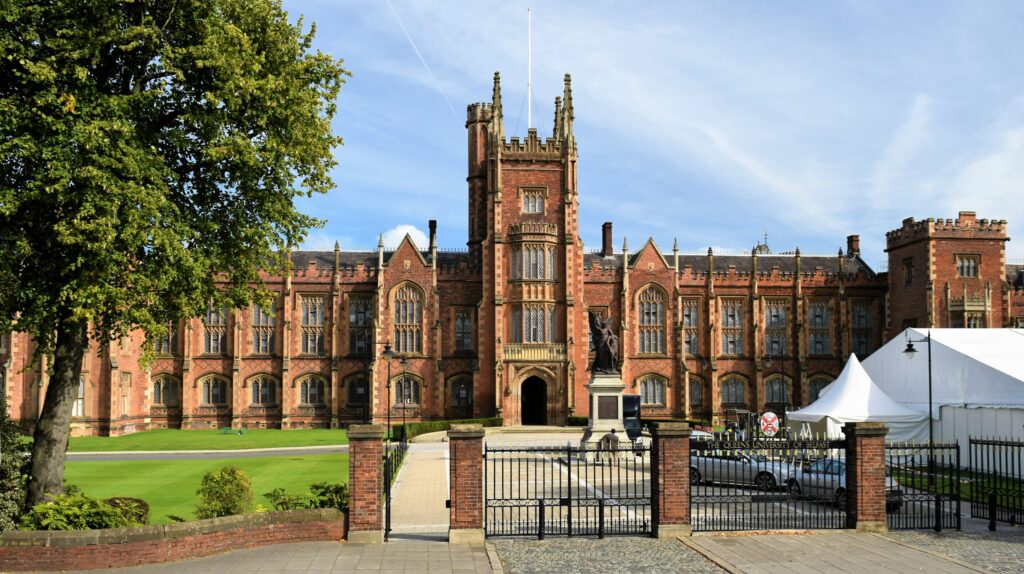
Queens University 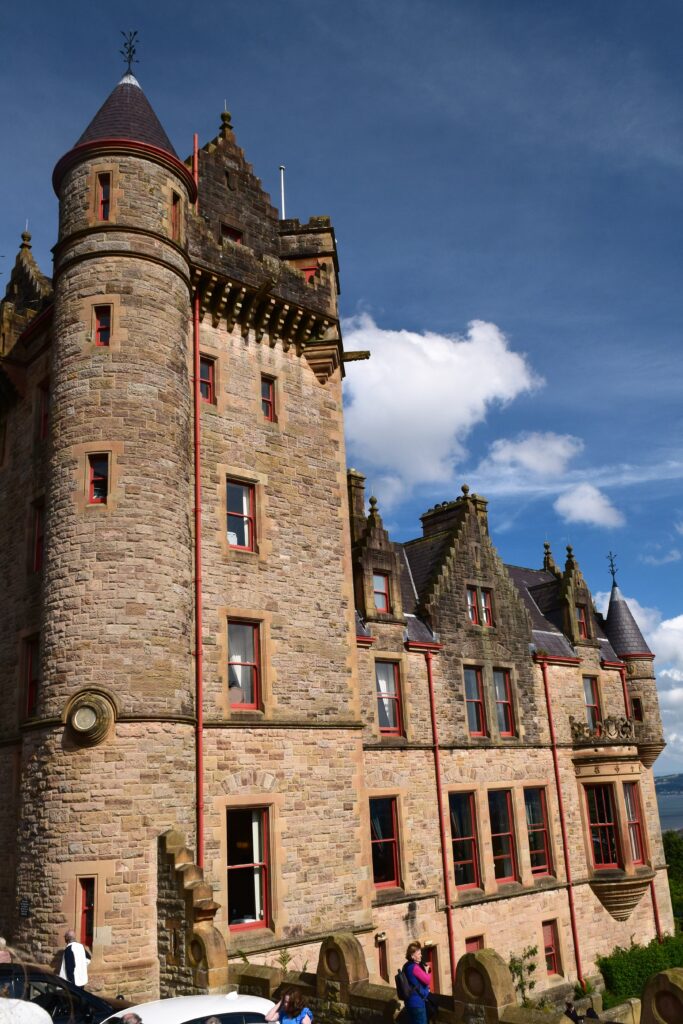
Belfast Castle, with a great view of the city. 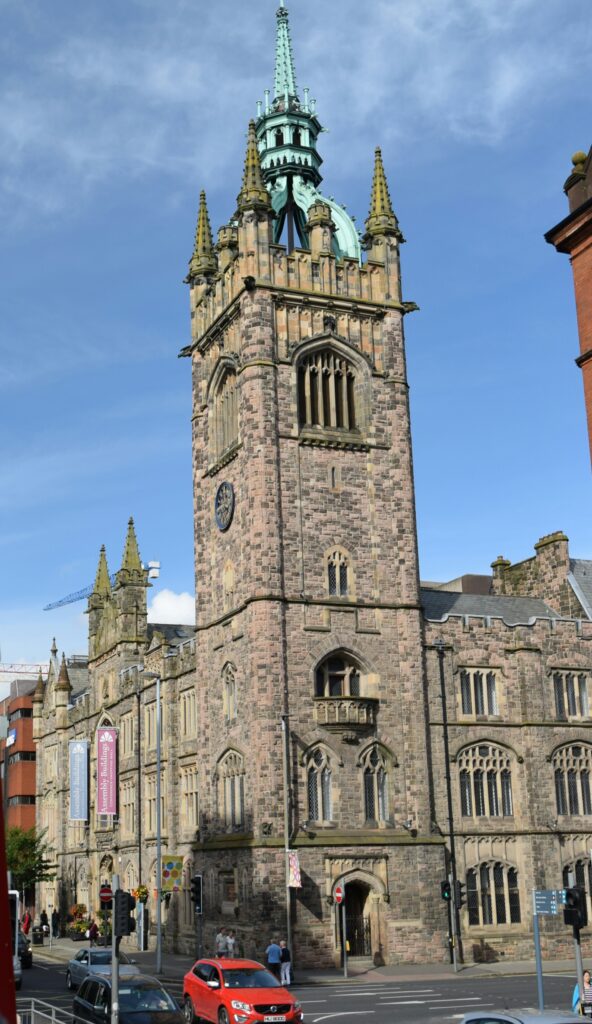
One of the massive ancient churches. 
But there are deep divides evident everywhere. 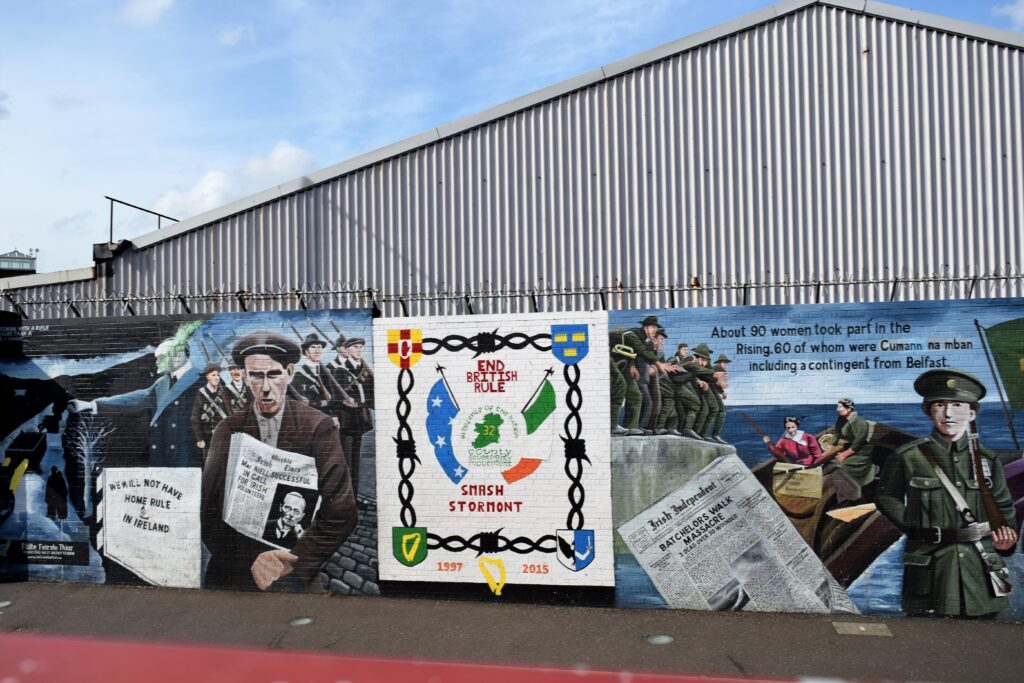
Stormont is the home of British oversight. So “smash Stormont” means “Throw out British rule.” 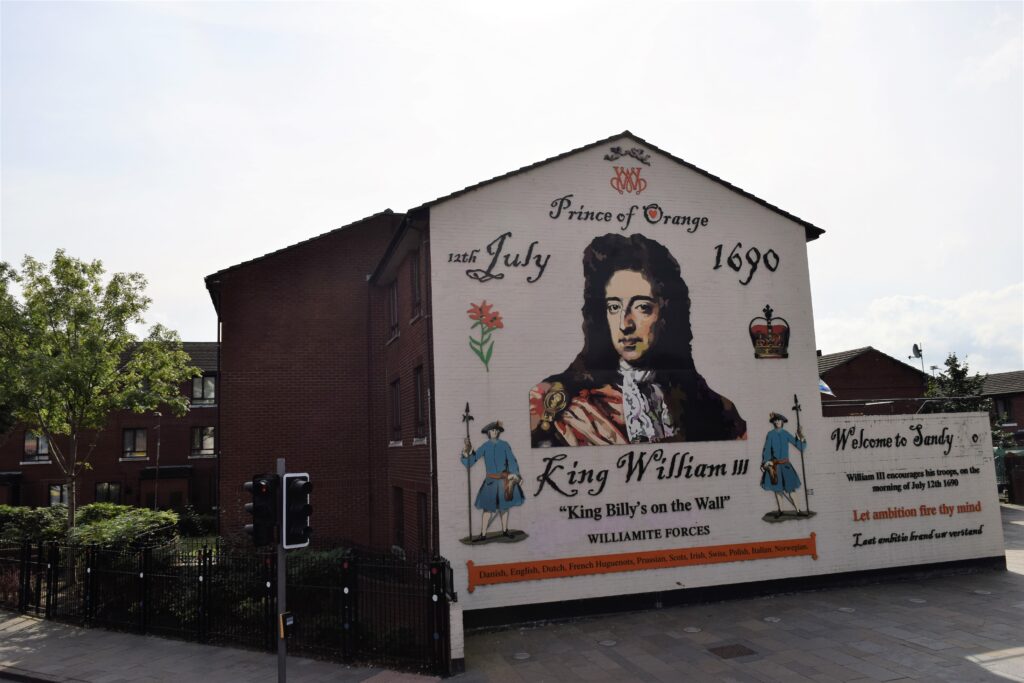
And when they trace loyalties back to 1690, you know there is something deep in the psyche. 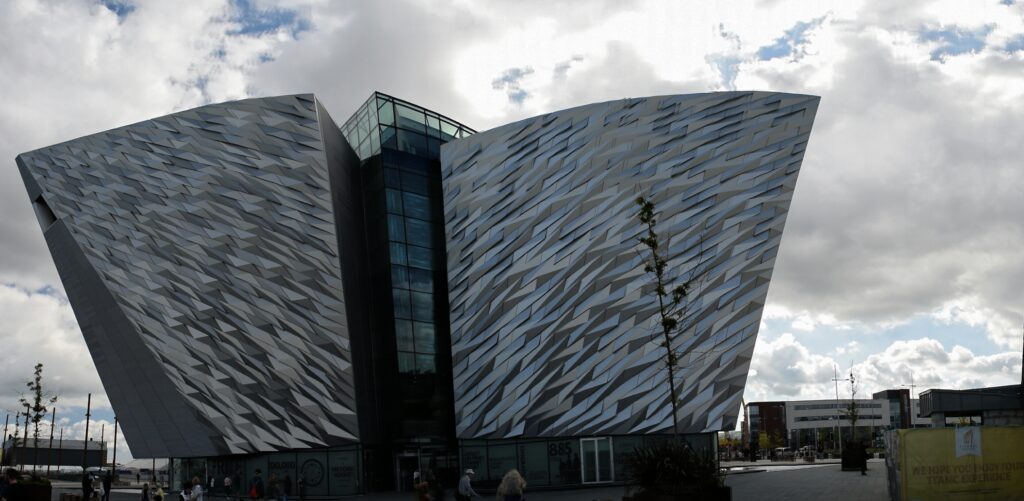
The Titanic multimedia experience was well worth it. Just WOW! 
Re-imaged Titanic staircase. 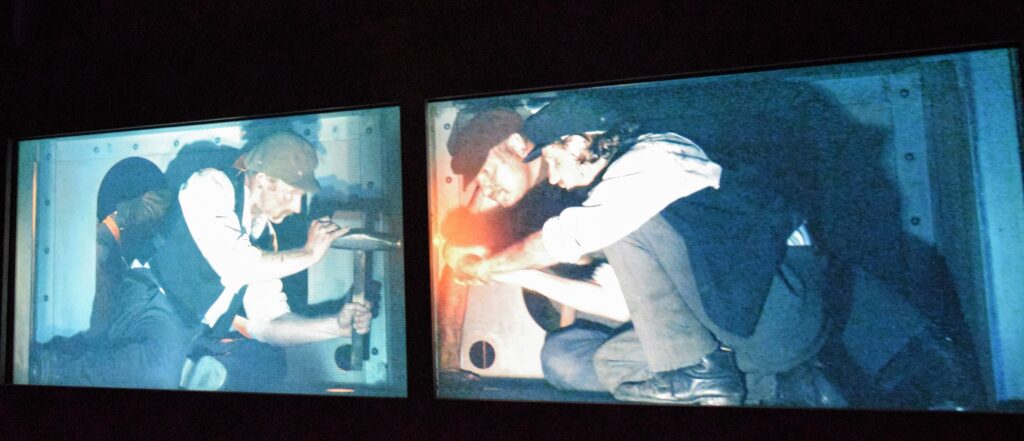
And a demonstration of actual working conditions during construction. 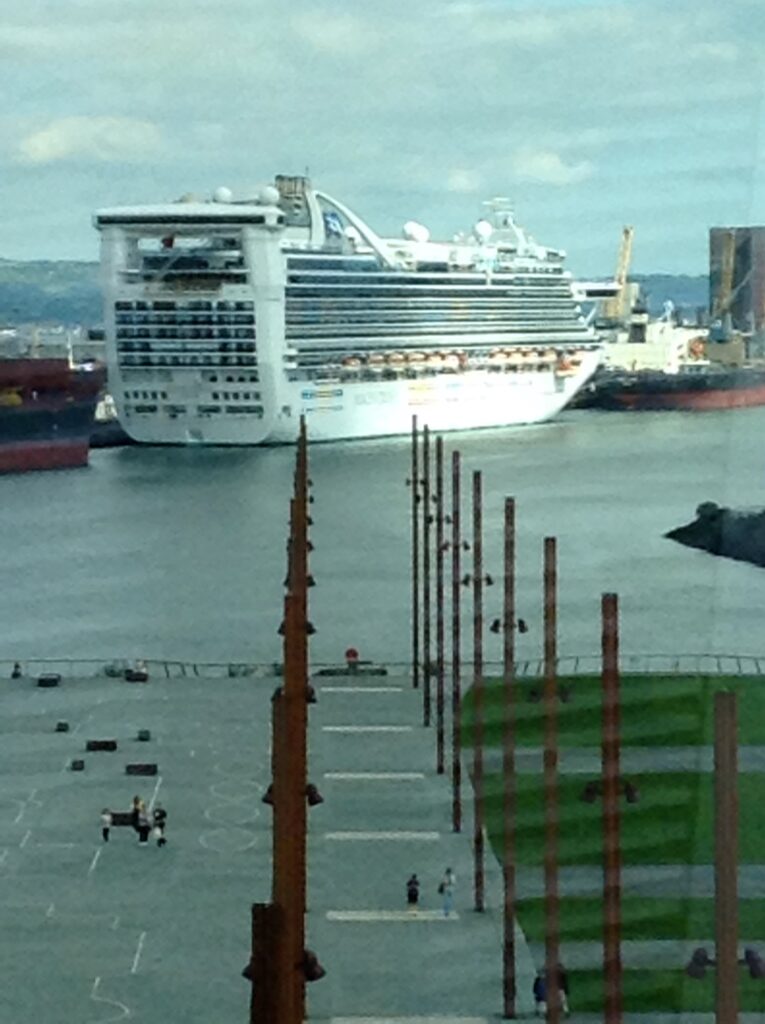
The finished Titanic and other ships slid down these poles and entered the water about where our ship is docked. Note that our modern ship is about the same size as the Titanic.